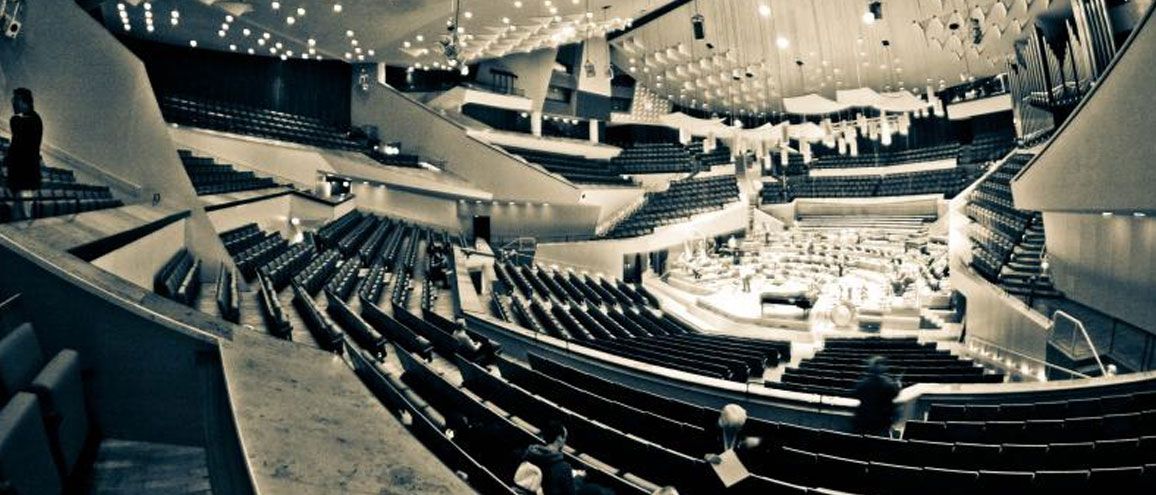Interview with Mario Cucinella by Conrad Bercah

Published
20 Dec 2018
Reading
7 min
MC – Architecture often answers the wrong question, or an insufficiently precise question, and so takes refuge in an overstated aesthetic. My pragmatic self wonders how far we want to exasperate form and turn it into extravagance. The real problems lie elsewhere: finding a system that will allow people to live together; planning the city; doing something about pollution, about a new way of aggregating buildings, etc. In light of these issues, the hyped aestheticism of some buildings pales. Buildings today seem to be treated like works of art, with all the other problems being left to someone else to deal with. Everything I have learned tells me that these problems I have just mentioned are inextricably part and parcel of architecture.
CB– You seem to be referring to the ‘archistar’ phenomenon.
MC – Yes, but here we’re talking about only a dozen odd people. Not enough to cause too much upheaval. It’s right that there be experimenters who explore the world that is yet to be, and strike out in new directions. Throughout the Humanist world, the avant-garde are ahead of their times and more gifted than others in their creative drive. But this quite necessary process often gets turned into huge operations with zero content, which is not, however, taken into account by those who communicate architecture. Architecture gets consumed like a fashion item photographed in a glossy magazine – and this is dire because you end up with a generation of kids preoccupied with image, not content. This preoccupation with image and the latest, most eye-catching novelty comes to us from a make-believe world. Such things don’t exist in the real world. I prefer concrete things; a real object rather than a virtual world that, however interesting, is illusory, the product of our advertisement culture. Let me give you a banal example. Automobile ads show you a world that doesn’t exist. You are shown cars speeding through empty cities – there’s no clue about where anybody lives. You see SUVs climbing Everest – a place you certainly don’t go to every day. It’s all an illusory trick to induce a fictitious need. The fact that this trick has invaded architecture is something I find odd, even dangerous.
CB – I don’t think that you’re saying it’s a question of language.
MC – The whole question of an architect’s expressive language whereby he always does the same things in his own style is outdated. Perhaps the last architects to do this in Italy were Gregotti and Aldo Rossi. Today, looking at what we are surrounded by, I really think that the question of language is a secondary issue. Obviously, everyone has their own words and way of doing things. But architecture has other problems: how to relate to context, to form, to energy issues, and how to adopt a much less academic mould. And that’s very evident in the magazines. Once a Rossi building was easy to spot, for example. Today, if you leaf through the magazines it’s hard to identify the author’s name without reading it. Obviously, you recognise something by Rem Koolhas or Sejima, even though you can’t really say they have a style as such. That’s something a bit different.
CB – The Japanese have a greater tendency to adopt a style than others.
MC – Yes, theirs is a unique ability, I’d say, because Sejima’s work is in fact built around a language. Toyo Ito is different, though, more complex. But anyway, some of them have taught me a lot. When I see what they can do in one of the most earthquake-prone places in the world, with such delicacy of touch, is fascinating. We don’t have that problem – or at least to a much lesser degree – yet we always have to go for the oversized. But I also think that’s where architecture is going generally. Form seems to be a more important element than language today: how to occupy space, and design objects in space rather than create virtuoso aesthetic tricks with the façades.
CB – That reminds me of Scharoun. When asked how he had thought of the elevation for the Berlin library, he didn’t know what to say. After thinking a bit, he admitted that he’d never asked himself the question.
MC – Exactly. When I went to see the Berlin Philharmonic what fascinated me most was the fact that it was practically impossible to remember what the building consisted of other than a series of forms dictated by acoustic and spatial requirements. As I student I would go to Berlin to see these architectures, coming from Italy where language was a very strong element. Casabella used to publish a whole string of architects that were doing their set pieces. So going to Berlin and seeing Scharoun was a liberation. He is still very contemporary.
CB – Scharoun also theorized about the empty spaces around which Berlin was effectively developed.
MC – It seems to me that urban planning has been one of the great failures of our time. If you look at the results and compare them with the effort spent, it’s obvious something hasn’t worked. Today we read the world in a dynamic way, but for too long urban planning was seen as a static format. But that’s saying nothing new. Zone, area or theme planning has failed to take flows into account, making a colossal mistake that for many years has had a series of consequences for the way neighbourhoods and functions have been planned. Town planning got it wrong from the post-war period onwards. Apart from the fact that in Italy, town planning components were conceived as rigid administrative and political tools, town planning itself was a political bargaining pawn. It allowed the political groups in the various regions to weld considerable power, and was also very often in the hands of far left groups belonging to the Italian left wing – you mustn’t forget that local town planning departments were often fiefs of the left, even re-constituted communists or the extreme left whose ideological idea of town planning was perhaps sometimes almost naïve… In short, you can’t see a city through Marxist eyes.
CB – …structure, and superstructure…
MC – What is interesting for me about the discipline of town planning is that finally we have understood that architecture is a fundamental element of it. You can make the best plans in the world but if you put the wrong architecture into them, they won’t work. All these things overlap in the long run. Today we have dynamic architectural design tools like thermodynamics and 3D modelling that allow you to see and understand both the space you have designed and its energy dynamics. If we were to do this at a town planning level too we would be able to have a dynamic reading of the territory and impose a creative and no longer ideological vision on our work. But today we have simply shifted from a highly political ideology and to the “creative” ideology.
CB – Speaking of the plan for Rome, Benevolo once said: “we were convinced that once the plan was approved, it would be implemented”. The fact is that Italy has a huge number of laws, some of which forbid the implementation of others.
MC – The country’s economy is faltering for a whole set of reasons, not all of them our fault. But one of the great drivers of the Italian economy was possibility of changing the legally designated use of land. This offered huge opportunities for corruption and generated immense fortunes, allowing speculation even at fairly low levels on the decision making scale. It also doped the market. But today the land has all been used up. So what now? What seems crazy to me is that the exclusively private issue of building speculation has been subsidised by public money. We will have to wait and see what happens. Either a visionary policy is somehow got under way – and I see no way that can happen – or this unfettered system will continue unchallenged. I am now coming to grips with certain town planning systems in Italy’s Veneto region that has been raped on account of the so-called Tremonti law. This law allowed companies to deduct the cost of industrial buildings, with the result that the Veneto valleys are dotted with empty industrial sheds that no one has bought and no one uses. Now that the countryside has been legally strewn with these buildings, the town planners are saying: “no more cement”. That’s a bit simplistic! You can’t compare acting within the law and acting outside it. Just because so many have built eyesores doesn’t mean that the only result of further building will be another eyesore.
Interview published on ![]()








